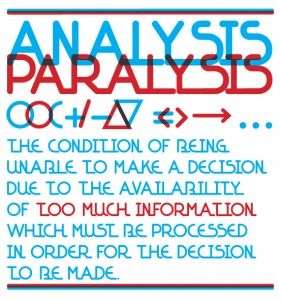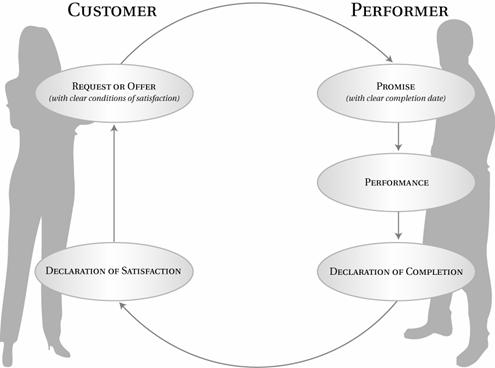 Time for a little celebration…And reflection…
Time for a little celebration…And reflection…
While I’ve spent a little over two decades consulting and practicing in the area of Performance Management, blogging and writing in the online arena (as we know know it) is still relatively new to me. Sure, I’ve written my share of traditional articles and case studies over the past several years around specific projects and experiences, but maintaining a “steady stream” of online content via the blogosphere is a different game altogether.
As you can tell from the title, I am viewing today as a bit of a milestone in that it is my 100th post for this particular blog. And while the frequency has varied more than I would have liked (from monthly to weekly to now almost daily), I feel I have now settled into a bit of a rhythm. And from the feedback that I’ve received; the frequency, content, balance of topics, and the ability of the blog to stimulate healthy dialogue and debate, appears to have hit an optimal point. At least for me, and for now.
Nonetheless, I am continuously reminded that this is just a starting point for me, and while there is some pride in having hit the 100 mark, I am still humbled by how much I still have to learn. The blogs and posts that I read, be it though links on Social Media, or my ever expanding “Google Reader queue” , continue to amaze me. Everyday, I see something new, from a topic I want to expand on, to a new tactic I want to deploy.
So today, I will try and deviate from my typical content focus of Performance Management , and focus a little more heavily on sharing what I have learned through these first 100 posts. However, I suspect, that before the post is concluded (maybe sooner), I will somehow “wind my way back” to a performance management connection or implication. Hey, its just the nature of the beast!
Lessons Learned…
I realize this isn’t the first, or last post you’ll read on the “lessons learned” of blogging or writing in today’s online environment.

In fact, the number of “how to’s” in the arena of blogging, and all the derivatives of it; from how to drive traffic to your blog site, to how to use your blog to drive up your “follow count” and online “klout”, is reaching almost nauseating proportions. So much so that I struggled on whether or not I even wanted to go there at all. Let’s face it, a lot of what’s written on the topic is either pure babble, or so overtly self serving (apparent when the content on the page you’re directed to is weighted 90% toward ads and sales pitches, and only 10% to what little content remains), that it screams “TURN ME OFF” from the very first click.
The reason that I am continuing on with this is that I am also certain that there is some genuine interest by people like me who are in fact using this channel in the spirit with which I believe it was intended. That is, they are using this space to engage in the kind of open dialogue and learning that will enhance and grow the area in which we share a common interest (the “rising tide” so to speak). Of course, most of us who use this vehicle in our professional endeavors have made some linkage (albeit subtle) to their business or market development process. But overall, the business blog is more about brand and identity than it is an overt attempt to generate a quick “ad click through” or online sale of Viagra.
So if you’re in my camp on that perspective, and are genuinely partaking in, or continuing your blogging activity for the purposes of learning, growth, and long term relationship building, then read on. If not, it’s probably best you tune out now. These are not tips on making your first million in the next 30 days. If you’re looking for that, you’re in the wrong place.
My Top 5 Lessons Learned…
Before I dive in, let me say a few words to bloggers who are new at this. There is a LOT of junk out there on the “how to’s” of blogging, as there are good tutorials on getting started. While you may find this post useful, it is not designed to be a complete “get started” guide, but rather some of the most important lessons learned for me ( i.e. Things that took a lot of trial and error to get close to right. Things you won’t learn in a 2 minutes guide to blogging). So if you’re new to all of this, try and get a good primer. You won’t have to look far, as about one on every 10 twitter posts relates to these kind of “how to’s”. I guarantee you, they will cover all the bases (importance of frequency, brevity, storytelling, engagement, actionable lists and suggestions, distribution channels, ..the list goes on.) Not worth wasting space on that here.
So what lies below are those “other” lessons learned that you probably won’t find in that online cookbook of blogging:
- Develop and harness your “idea machine”– Some bloggers will tell you that it’s good to carve out time everyday to generate ideas and fodder for future posts. While that may work for some, it’s never worked for me. Ideas hit me at various times throughout the day or night. So what works for me is to keep a log of ideas whenever they hit you (I write these down on a notepad or as an email to myself on my phone). Once a week or so, I use the draft feature on the WordPress blog site to get these “in the queue”, but only as titles at first. I fill in the body of those drafts as ideas come to me, and when I’ve got enough to work with, it only takes an hour or so to bang out a post. So instead of taking an hour a day to “create”, I’m literally creating all the time, logging ideas as I go. Instead, the hour I spend each day is on writing the actual post from one of the drafts in the queue.
- Work within, and outside your “sandbox”– “They say” you should always write about what you know and are comfortable with. Perhaps that’s good advice when you are starting out, but as time goes on, challenge yourself to climb into the unknown a bit. I’m not talking about something completely unrelated (although that can also be good on occasion), but maybe an area that you haven’t applied your discipline to before- a new function, process, discipline, etc. This is as much about your learning as it is about communicating your ideas to others. Over time, you’ll find that working outside of your “sweet-spot” will not only open new doors for you in applying your expertise to new areas and applications, but will begin spark new ideas. Staying fixed within your comfort zone will force your idea queue to stagnate quickly, and will also prevent the type of learning and growth that is possible as you move forward.
- Become a feedback “junkie”- Let’s face it, good feedback is not always the easiest thing to listen to. But we all have experienced the benefits that are generated from good feedback, and we inherently understand “why” we should crave it. We also understand that feedback from different sources has different value. Feedback from close friends and colleagues is much more valuable than it is from someone who doesn’t know you from Adam.The problem is that when you begin blogging, feedback will come from literally everywhere, the the explicit feedback you get in the comment section of your blog, to the indirect feedback you receive through your re-tweets and readership counts will become literally overwhelming for some. And when that happens, the temptation is to ignore it, either literally (simply by “turning off” comments feature on your blog), or by simply ignoring feedback from your “digital” network (in lieu of that comes to you via your good old “analog” friends). But in doing that, you’ll not only eliminate all of the unhelpful feedback, you’ll also eliminate a new source for those “future pearls” that will really make a difference in your growth and development. So instead of limiting the size of the “feedback pipe”, I say get better at how you filter the feedback that flows through it. The old adage “take what you like and leave the rest” is sage advice in this arena. Instead of getting upset or stewing over a particular comment or someone who disagrees with your point, simply thank the contributor and file it away for potential future reflection. Then move onto the next. As your network and feedback stream grows, you’ll find that your new “digital best friends” will emerge that are just as important to your growth as your long time trusted analog ones. And once you find those, embracing that feedback through active dialogue and debate will really begin to lift your game. It takes time to make those distinctions and learn how to apply your “internal filter”. But getting good at this will multiply your learnings many times over.
- Design a routine that works for you- I touched on this in point #1, but there is more to the routine than just writing. Getting good at this (and I am FAR away from mastering it myself) does take commitment. While it does not have to, nor should it, consume your every waking hour (lest it become like an an addictive “drug” of choice), it does take time. And that time NOT all about writing. For me, that routine is simple. First, I spend an hour in the morning (something I do anyway) to read and learn Only now, instead of doing it via newspapers and an RSS reader, I do it on my mobile device with an application like “Pulse” that lets me quickly scan and read much quicker than before. It also gives me one click access to sharing posts I like “on the spot”. But the point is that my morning hour is about 75% reading, and 25% sharing what others have written. It also serves to feed the idea queue I mentioned above. Second, I spend about an hour late afternoon or early evening writing a new post from one of the “drafts” that are already mostly populated in my queue. If you get good at #1 above, this is a very easy step and the speed with which you write increases quickly. Finally, usually late in the evening, and often in bed with my iPad, I set aside some time for engaging others. Of course, like most of you, I engage throughout the day, dropping a post or two on twitter, and responding to others if I happen to have a few spare moments in a cab or on an airplane. But at night, my time is reserved for quality engagement like responding to someone else’s blog post via a well thought out response or some other type of “direct” interaction via email or message board. Now all of that may sound like a lot, but only one of those 3 hours represents something new (the actual blog post itself). All the rest is stuff I would have normally done, but simply changed the manner in which i do it so that it now serves multiple purposes.
- Take the word “perfection” out of your vocabulary- … at least for this part of your life. Blogging by its nature is not formal “article writing”, although a few of your posts may evolve toward that. It is about getting your ideas on “paper” and engaging others to take that dialogue to another level. Sure, it makes sense to do a quick proof so that you don’t distract your audience, but this is not “book editing”. You should be comfortable trading off a small typo here or there, for the speed and flexibility that is necessary to create and participate in dialogue and learning. I’ve seen people (your’s truly included) spend so much time polishing something to perfection, that the topic and debate has come and gone by the time you’re ready to post. In this area, shoot to be “good” but not “perfect”.
I’ll mention one more thing, but I’ll keep it separate from the rest because you’ll see this discussed in a lot of other places. And that is the importance of measuring your progress (See, I told you I’d get back to the performance management discipline before long). Seriously though, you can’t manage what you don’t measure. Early on, your friends and colleagues (both analog and digital in variety) will be a good enough barometer for you. But over time, as your audience gets more diverse, it will be helpful to start looking at some more formal indicators. Between WordPress and Twitter, you’ll have most of what you need at first. All you’re looking for is 3 things. First, what is happening to readership (the number itself is less important that the growth). Are you seeing week on week, or month on month, gains? Second, and more importantly, are you getting some secondary effect through email forwards or re-tweets? (btw- for my own tracking, I only count re-tweets from people who I can tell viewed the article, or who I know well enough to trust. Beware of those who Re-tweet a 10 paragraph post within a nano-second of your initial post!) And finally, while it’s not your primary objective at first, you should start looking at whether or not you are making a connection to your business (if that is in fact a secondary objective for you). I’m not talking about sales or ‘click-throughs’ per se, but simply whether you driving people to the objective you have, be it referrals, visitors to you company’s website, or something else that is important to you.
More lessons await…
 Like I said before, there are hundreds of other tips you will encounter, whether you try to or not. As you begin to use social media more, you will get literally bombarded with helpful (and unhelpful) tips and you can’t and won’t avoid them all. So whether you try or not, you’ll get lots of tactics to try out, from where to place your twitter button and RSS feed, to the best way to syndicate your good posts.
Like I said before, there are hundreds of other tips you will encounter, whether you try to or not. As you begin to use social media more, you will get literally bombarded with helpful (and unhelpful) tips and you can’t and won’t avoid them all. So whether you try or not, you’ll get lots of tactics to try out, from where to place your twitter button and RSS feed, to the best way to syndicate your good posts.
And as your network grows, so will your feedback. Some will be helpful and some wont. Again, take what you like and leave the rest for your “bank for downstream consideration”. Also, as you’re network and readership grows, you need to stay alert to the principle of quality over quantity. That goes for your posts, AND your network. While you may amass a significant following, a good rule of thumb is that only 1 out of ever 20 followers (at best) are what I would call “true digital friends”. That is not meant to disparage any of your followers, but just as you trust some of your “analog friends” more than you do others, the same will apply in digital space. These may not necessarily be those with the biggest following or highest klout scores (most often, they’re not). Rather, they are those who engage you and provide you with quality feedback, good ideas, and have similar interests and objectives. So make an ongoing commitment too identifying and harvesting these friendships, and growing these relationships.
Here’s to another 100!
Of course the beauty of writing posts like this is that you are never “right or wrong”. They are YOUR (in this case MINE) experiences to share. And if someone disagrees or wishes to embellish, you’ll no doubt get that wonderful feedback in your “comments” for you to process as you like.
Thanks for reading and here’s to the next 100 posts!
Author: Bob Champagne is Managing Partner of onVector Consulting Group, a privately held international management consulting organization specializing in the design and deployment of Performance Management tools, systems, and solutions. Bob has over 25 years of Performance Management experience and has consulted with hundreds of companies across numerous industries and geographies. Bob can be contacted at bob.champagne@onvectorconsulting.com






 Analysis– When many companies hear the word “analysis”, they go straight to thinking about how they can better “work the data” they have. They begin by taking their scorecard down a few layers. The word “drill down” becomes synonymous with “analysis”. However, while they each are critical activities, they play very separate roles in the process. The act of “drilling down” (slicing data between plants, operating regions, time periods, etc.) will give you some good indication where problems exist. But it is not “real analysis” that will get you very far down the path of defining root causes and ultimately bettersolutions. And often, it’s why we get stuck at this level. Continuous spinning of the “cube” gets you no closer to the solution unless you get there by accident. And that is certainly the long way home. Good analysis starts with good questions. It takes you into the generation of a hypothesis which you may test, change and retest several times. It more often than not takes you into collecting data that may not (and perhaps should not) reside in your scorecard and dashboard. It requires sampling events and testing your hypotheses. And it often involves modeling of causal factors and drivers. But it all starts with good questions. When we refer to “spending more time in the problem”, this is what we’re talking about. Not merely spinning the scorecard around its multiple dimensions to see what solutions “emerge”.
Analysis– When many companies hear the word “analysis”, they go straight to thinking about how they can better “work the data” they have. They begin by taking their scorecard down a few layers. The word “drill down” becomes synonymous with “analysis”. However, while they each are critical activities, they play very separate roles in the process. The act of “drilling down” (slicing data between plants, operating regions, time periods, etc.) will give you some good indication where problems exist. But it is not “real analysis” that will get you very far down the path of defining root causes and ultimately bettersolutions. And often, it’s why we get stuck at this level. Continuous spinning of the “cube” gets you no closer to the solution unless you get there by accident. And that is certainly the long way home. Good analysis starts with good questions. It takes you into the generation of a hypothesis which you may test, change and retest several times. It more often than not takes you into collecting data that may not (and perhaps should not) reside in your scorecard and dashboard. It requires sampling events and testing your hypotheses. And it often involves modeling of causal factors and drivers. But it all starts with good questions. When we refer to “spending more time in the problem”, this is what we’re talking about. Not merely spinning the scorecard around its multiple dimensions to see what solutions “emerge”.



 boats…”
boats…”
